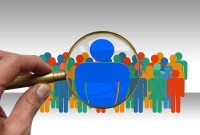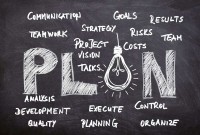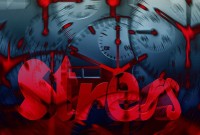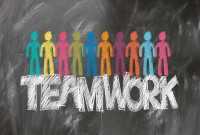- Home
- Business Processes
- Industry Knowledge
- Aerospace Industry
- Automotive Industry
- Banking Domain
- BFSI Industry
- Consumer/ FMCG Industry
- Chemicals Industry
- Engineering & Construction
- Energy Industry
- Education Domain
- Finance Domain
- Hospitality Domain
- Healthcare Industry
- Insurance Domain
- Retail Industry
- Travel and Tourism Domain
- Telecom Industry
- Leadership Skills
- eLearning
- Home
- Leadership Skills
- Leadership Theories
- Kolb Learning Cycle & Change
Kolb Learning Cycle & Change
David Kolb produced this popular model for learning in 1984. The model suggests four stages of learning which most learners go through in order to learn effectively. Leaming is itself a process of change. Something is added to our perception and prepared us for the next impression, which will change our understanding yet more, however minutely. The Kolb contribution is a significant one because it practically equates change and learning.
Kolb’s Model of Experiential Learning
David Kolb's from Western Reserve University in Cleveland, Ohio gave the model of "experiential learning" which states that humans learn continually, and, in the process, build particular strengths. He says that learning is all about having experiences and then reflects upon the experience that we have just had. We draw out some concepts and some principles from this reflection and test out the new concepts in new situations so that they become part of the ongoing experience. He described it in terms of four learning styles: Accommodating, Converging, Diverging, and Assimilating.
Kolb’s Living Experience
Kold is also a supporter of the theme of human becoming and what they become. He uses the word 'learning', and all these ideas come together and form a framework within which we can think about change and even learn to love it and welcome it. Laming is itself a process of change. Something is added to our perception and prepared us for the next impression, which will change our understanding yet more, however minutely.
What David Kolb is talking about is the normal scientific approach, where observations made are the normal scientific approach, where observations are made and reflected upon to yield theories from which hypotheses are derived and tested out in action, creating new events and experiences.
The first stage is concrete learning or concrete experience, where the learner encounters a new experience or reinterprets an existing experience. This could be where the learner is exposed to a new task or a new way of carrying out a project. This is followed by reflective observation, where the learner reflects on the experience on a personal basis. Following reflective observation is abstract conceptualization, where learners form new ideas or modify current abstract ideas, based on the reflections that arise from the reflective observation stage. The last stage is where the learner applies the new ideas to her surroundings to see if there are any modifications in the next appearance of the experience. By actively experimenting learns to associate what we have experienced with new ideas and innovations.
Change is learning
When you learn, you change. When you change, you learn. The Kolb contribution is a significant one because it practically equates change and learning. A book on change is therefore also a book about learning. Reginald Revans (1907–2003), a UK scientist and educational innovator who gave the “Action Laming framework” made a distinction with two little symbols L>C and C>L. If learning is represented by L and change represented by C then the first symbol means you are ahead in the game you are learning faster than things change. The second can spell disaster because things are changing faster than you are learning so that you are behind in the race. His contribution to our understanding of change management processes gives a central place to learning, both personal and institutional. Revans’ approach emphasizes the practical and moral significance of personal involvement in action and learning, as a means of resolving the intractable social and organizational problems that we find around us.
Revans is in harmony with Kolb in that his contribution of Action Learning is based on the concept that people learn more from reflection, discussion, and working together on real-life issues than from being lectured at. They learn from each other and the learning is relevant, and even when the classroom is being used for input, it is important to provide plenty of scope for learning in this way.
For a change initiative to succeed, project managers must effectively support those affected by the change during the project. Those grappling with the effects of change might need the training to tackle it effectively and we can use this framework to train people with different learning styles; to plan change communications; and to deal with team members who lack motivation; and more.
These perceptions of what is to be human can help us to take a positive approach to change and make it work to our advantage and to that of our enterprise. You are only really alive when you are changing. It is the essence of personal growth, it is the basis of relationships with other people, and without it, there is no learning and no progress.
Related Links
You May Also Like
-
David Kolb produced this popular model for learning in 1984. The model suggests four stages of learning which most learners go through in order to learn effectively. Leaming is itself a process of change. Something is added to our perception and prepared us for the next impression, which will change our understanding yet more, however minutely. The Kolb contribution is a significant one because it practically equates change and learning.
-
Participative leadership is one of the most effective styles and creates higher productivity, better contributions from group members, and increased group morale. The democratic leadership style consists of the leader sharing the decision-making abilities with group members by promoting the interests of the group members. Learn more about this leadership style and situations when it is effective.
-
Generating Ideas using Brainstorming
The brainstorming technique was developed by Alex F. Osborn in 1957 and brainstorming means where a team of members generates a large amount of alternative fruitful ideas on a specific problem without any criticism and then evaluates each idea in terms of their pros and cons. Brainstorming techniques fall into four broad categories: visioning, exploring, modifying, and experimenting.
-
At different points in your professional career, it is helpful to identify your core values. Values are the qualities considered to be the most important guiding principles that determine the priorities in your life and greatly influence your career choices. Your career brings happiness when it is in agreement with the beliefs you have about what is important and meaningful to you. Awareness of your values will help you develop a clearer sense of what's most important to you in life.
-
Team Development by Building Trust
As your team begins to work together, you need to establish a way each team member can exchange ideas and build mutual trust. Successful groups are built on trust and collaboration. A free exchange of ideas, in an open environment, will allow your team to get to know each other and enable you to check on how they work together. Learn some tips to help build team trust and establish personal bonds.
-
Tools for Developing Your Team
If a manager has too many weak spots in the talent of the team, the ability to empower the team members to independently execute the project is impaired. Assignments fall behind schedule or stretch out because the needed skills or knowledge are not in place when needed. To successfully execute important projects, hiring talented people, and increasing the talents of existing staff are most important.
-
Charles Darwin had once commented that “It is not the strongest or the most intelligent who will survive but those who can best manage change.” Agility means the capability of rapidly and efficiently adapting to changes and recently, agility has been applied in the context of software development, agile enterprise, and agile leadership. Agile leaders play an important, even essential, role in scaling agility in an organization. Understand how being an agile leader helps in effectively catalyzing organizational change.
-
Stress is an essential part of our life. No one can live without stress. Stress can be beneficial as well as harmful. Stress as a positive influence adds excitement and hope while as a negative influence it can result in destructive feelings, anger, and depression. Although the general orientation to stress is to consider unfavorable outcomes, yet one must have observed that stress experiences may also facilitate the development of effective and varied coping behavior, increased personal resources, and lead to a sense of competence in development. Stress at a moderate level is not only inevitable but may be useful for physical and mental well-being.
-
Teams are part of the modern organizational culture. Whether you are a team leader or a team member, having a better understanding of how teams work, and being able to identify where the team is in the process, is a critical part of ensuring the team is ultimately successful. Start with the basics and understand what a team is and what role they play in an organization.
-
A manager or an employee in an organization who is experiencing a high level of stress may develop high blood pressure, ulcers, irritability, difficulty in making routine decisions, loss of appetite, accident proneness, and the like. These can be subsumed under three general categories, physiological, psychological, and behavioral symptoms. Stress can give rise to a number of changes.
Explore Our Free Training Articles or
Sign Up to Start With Our eLearning Courses

About Us
Learning
© 2023 TechnoFunc, All Rights Reserved










